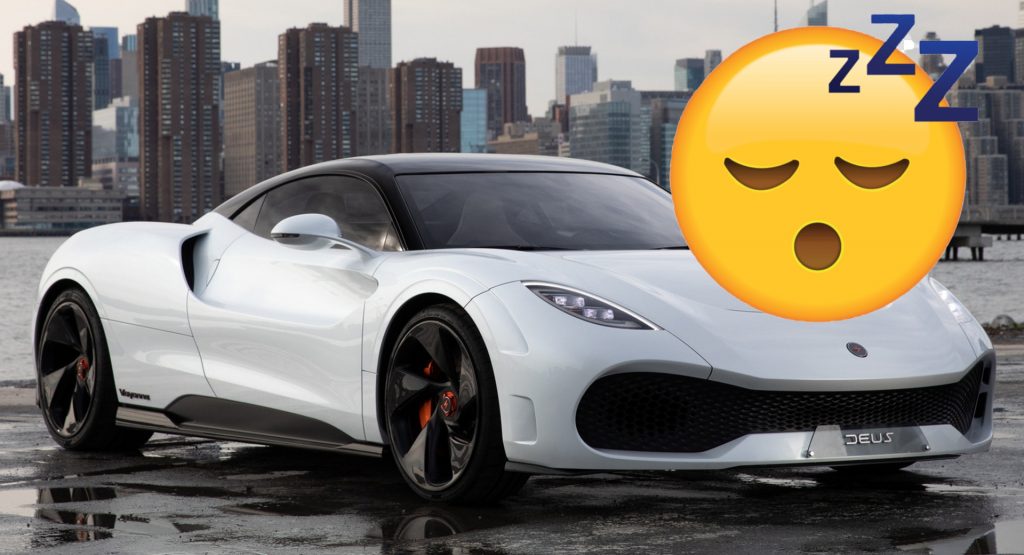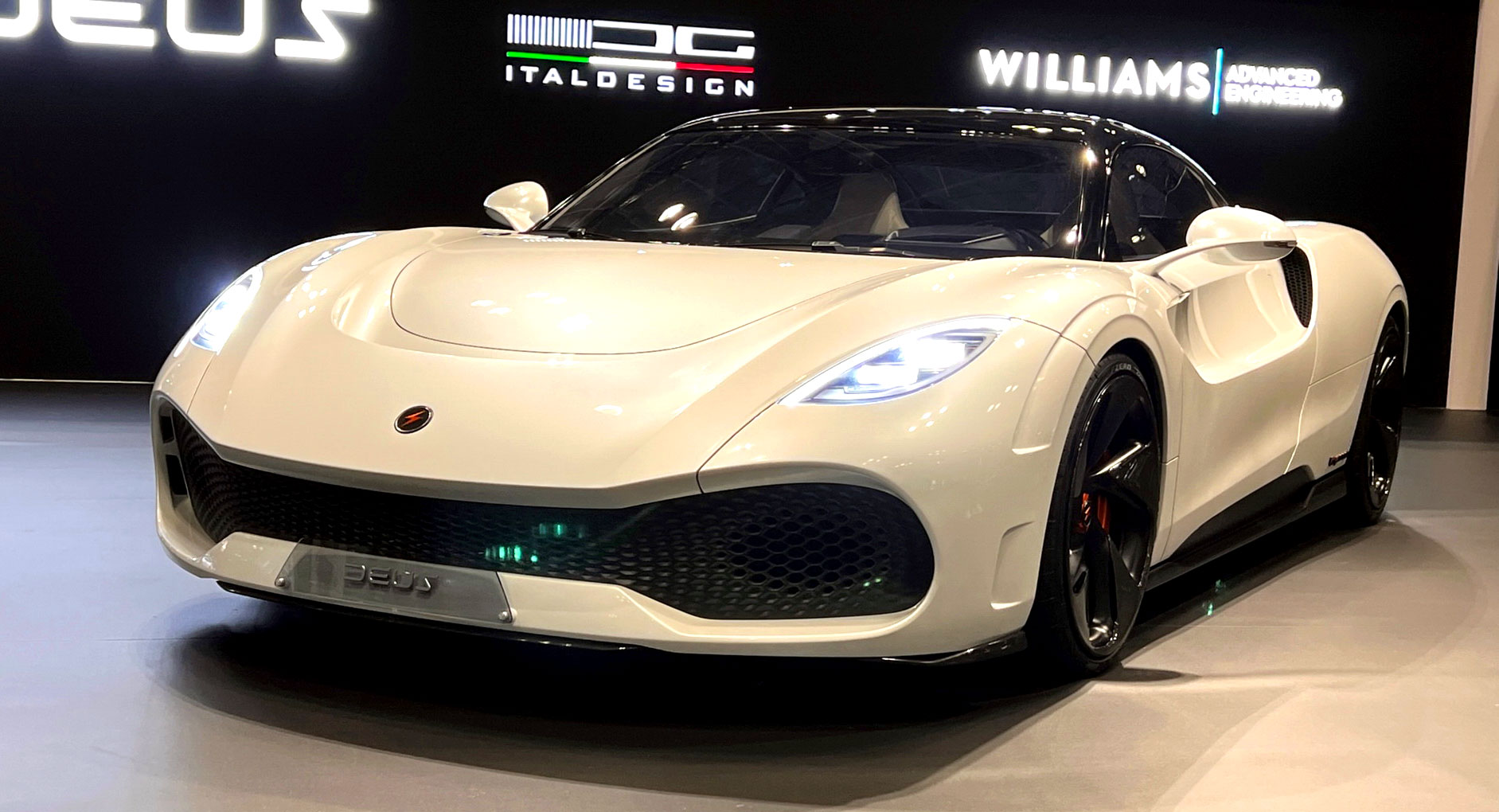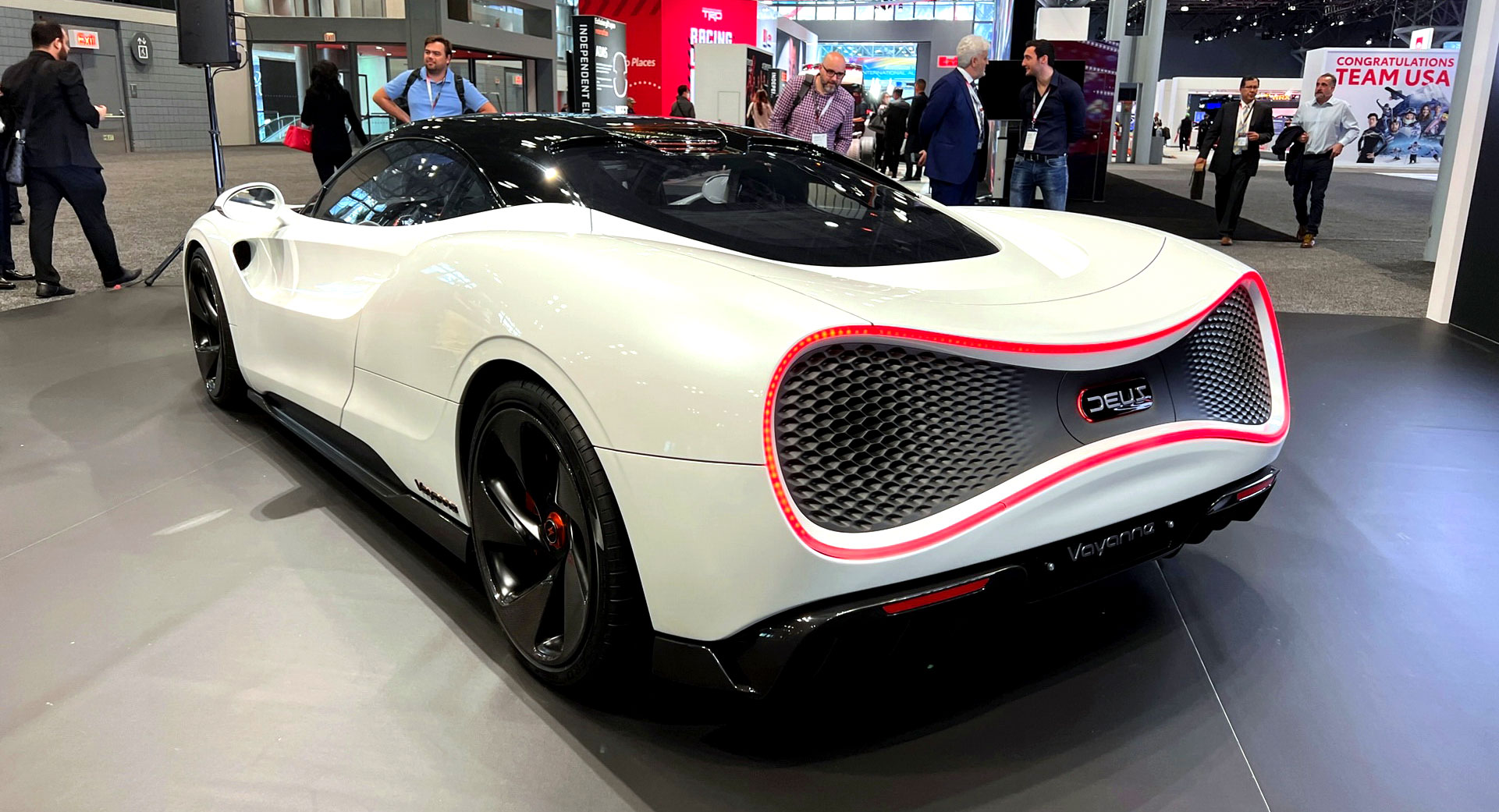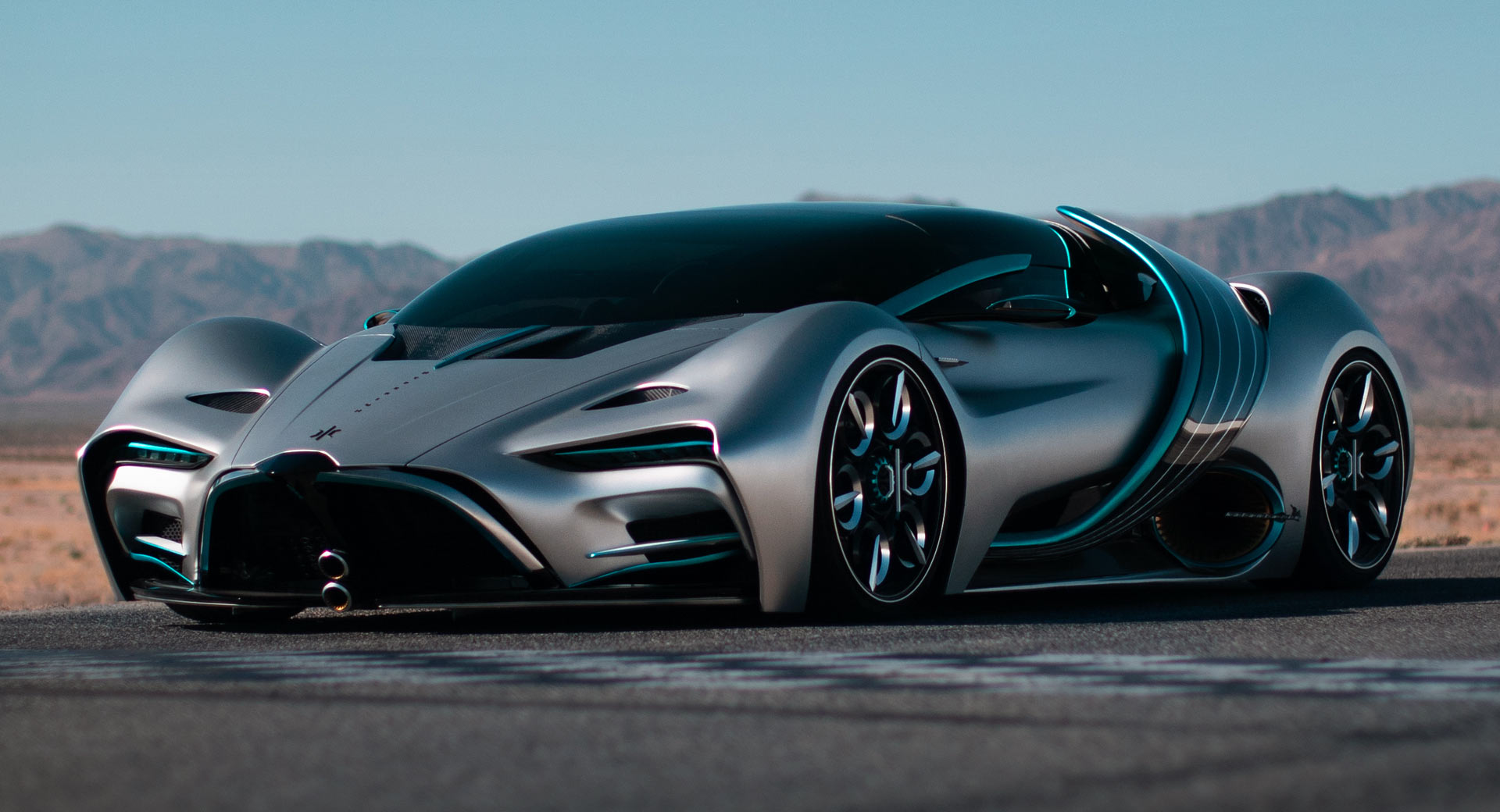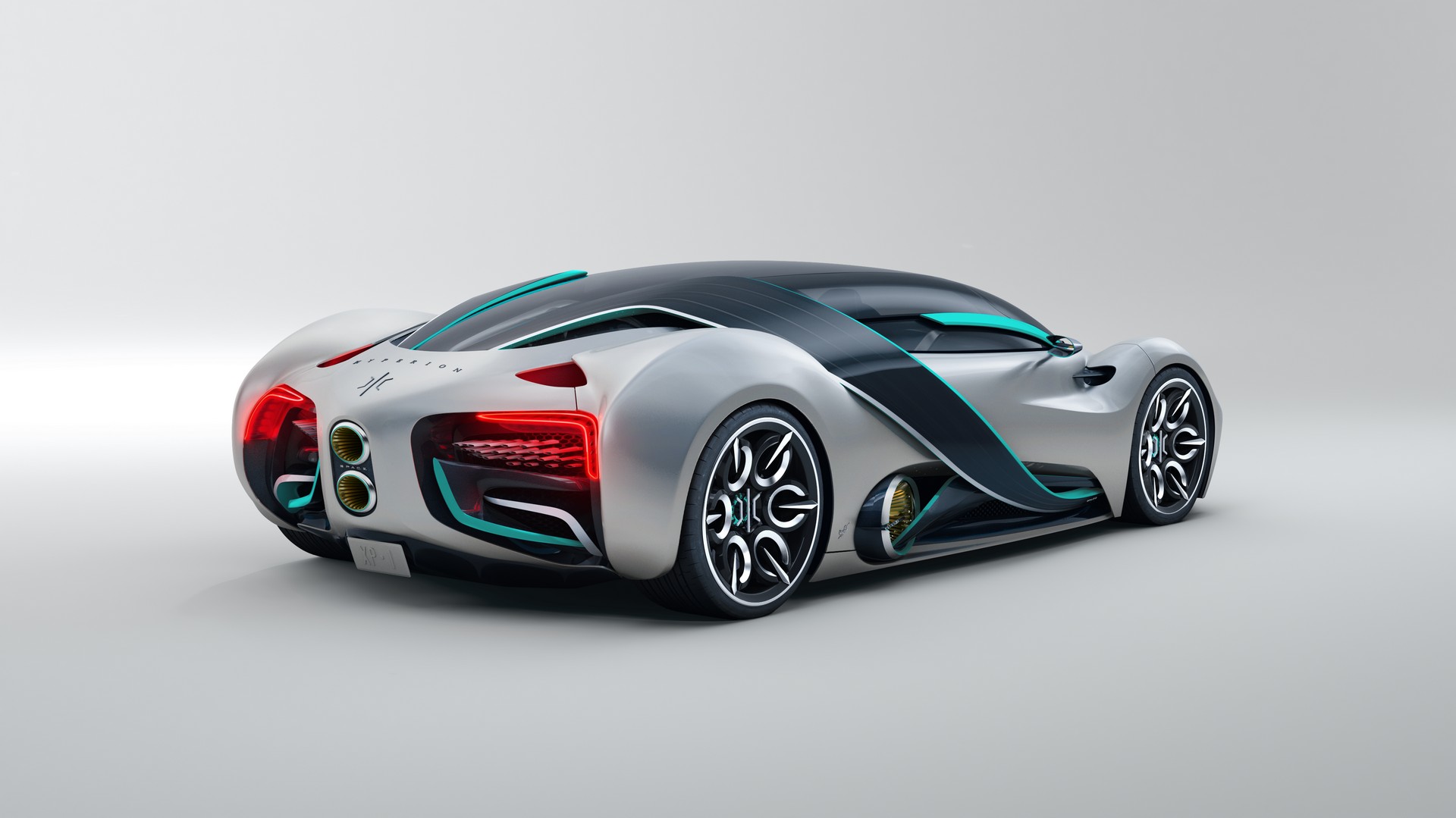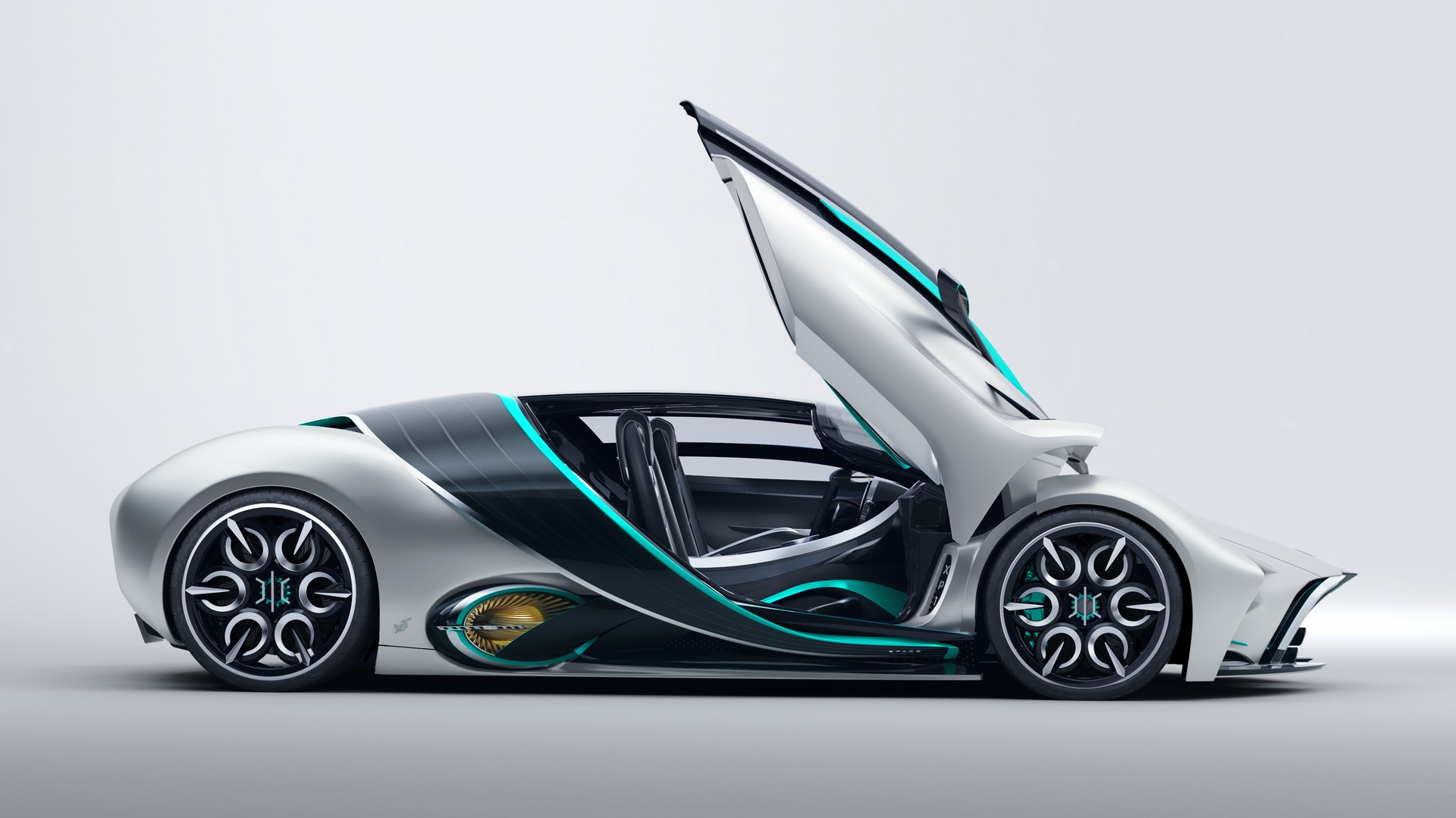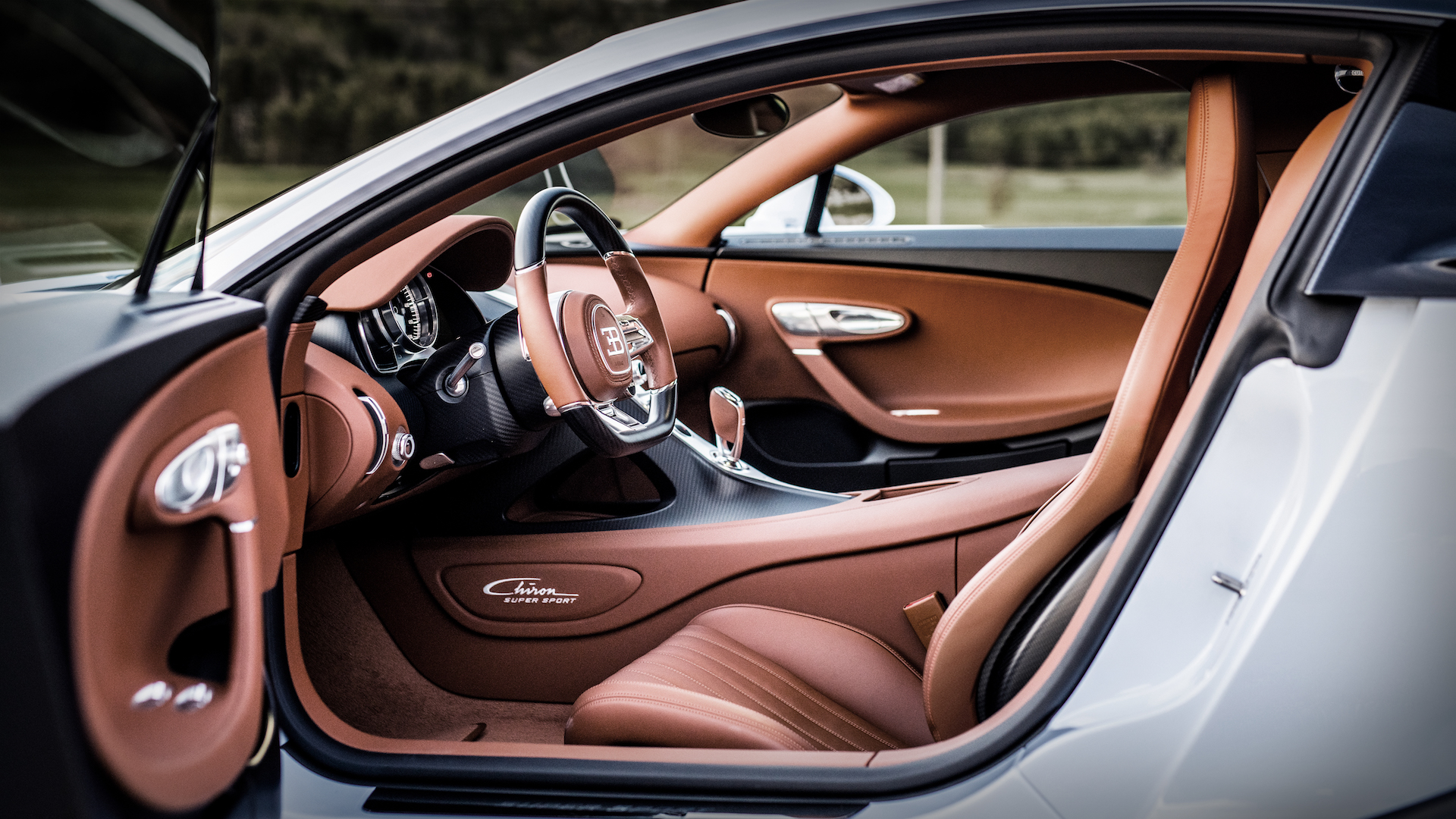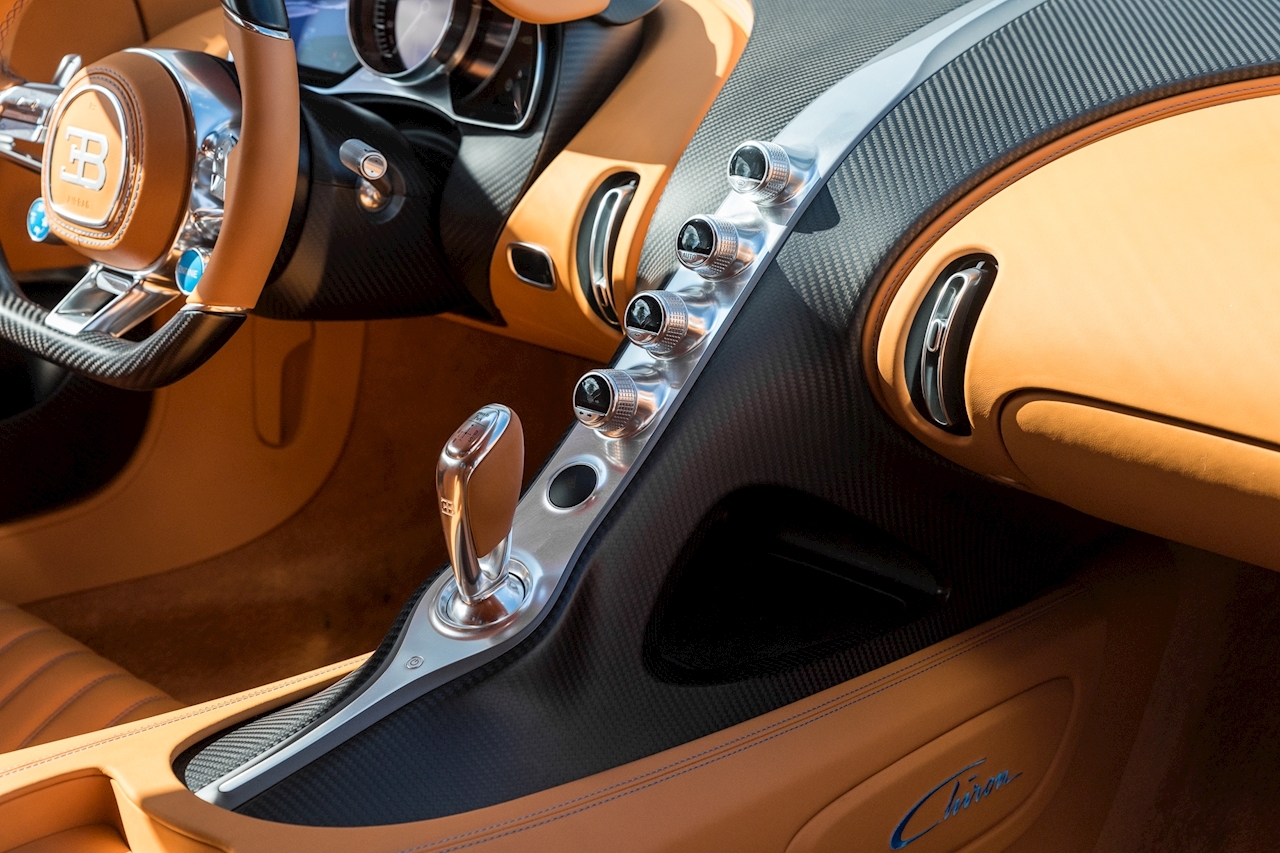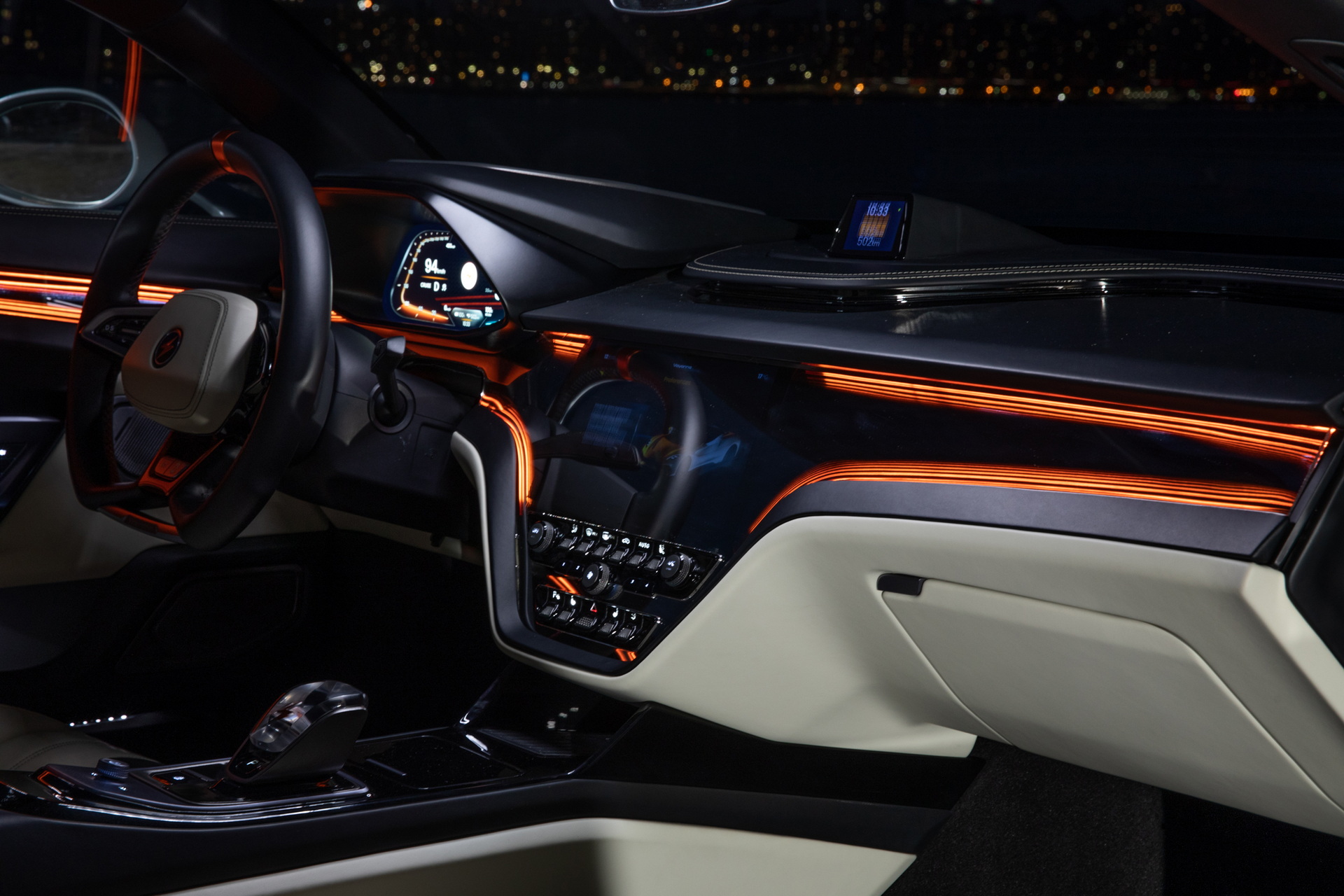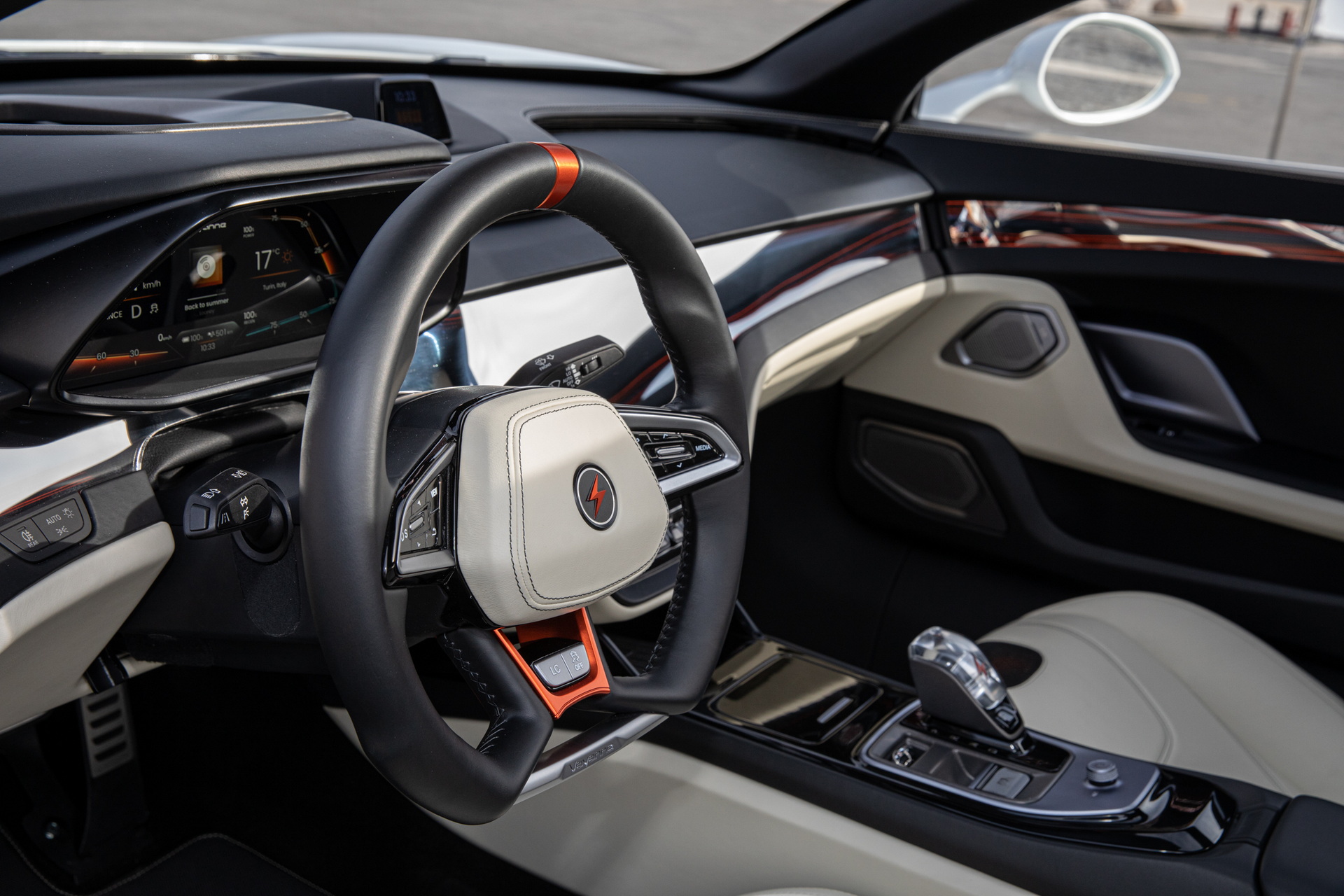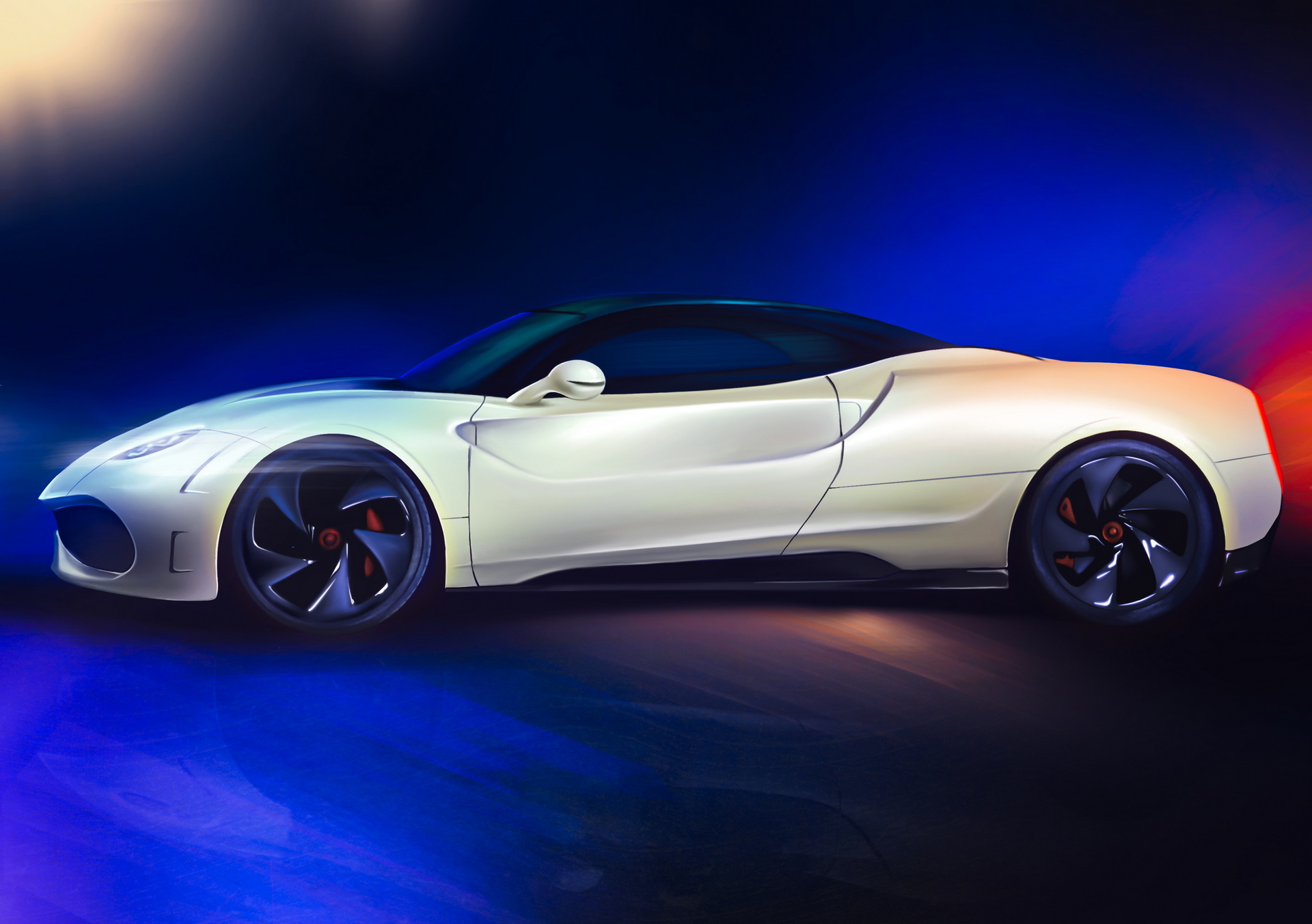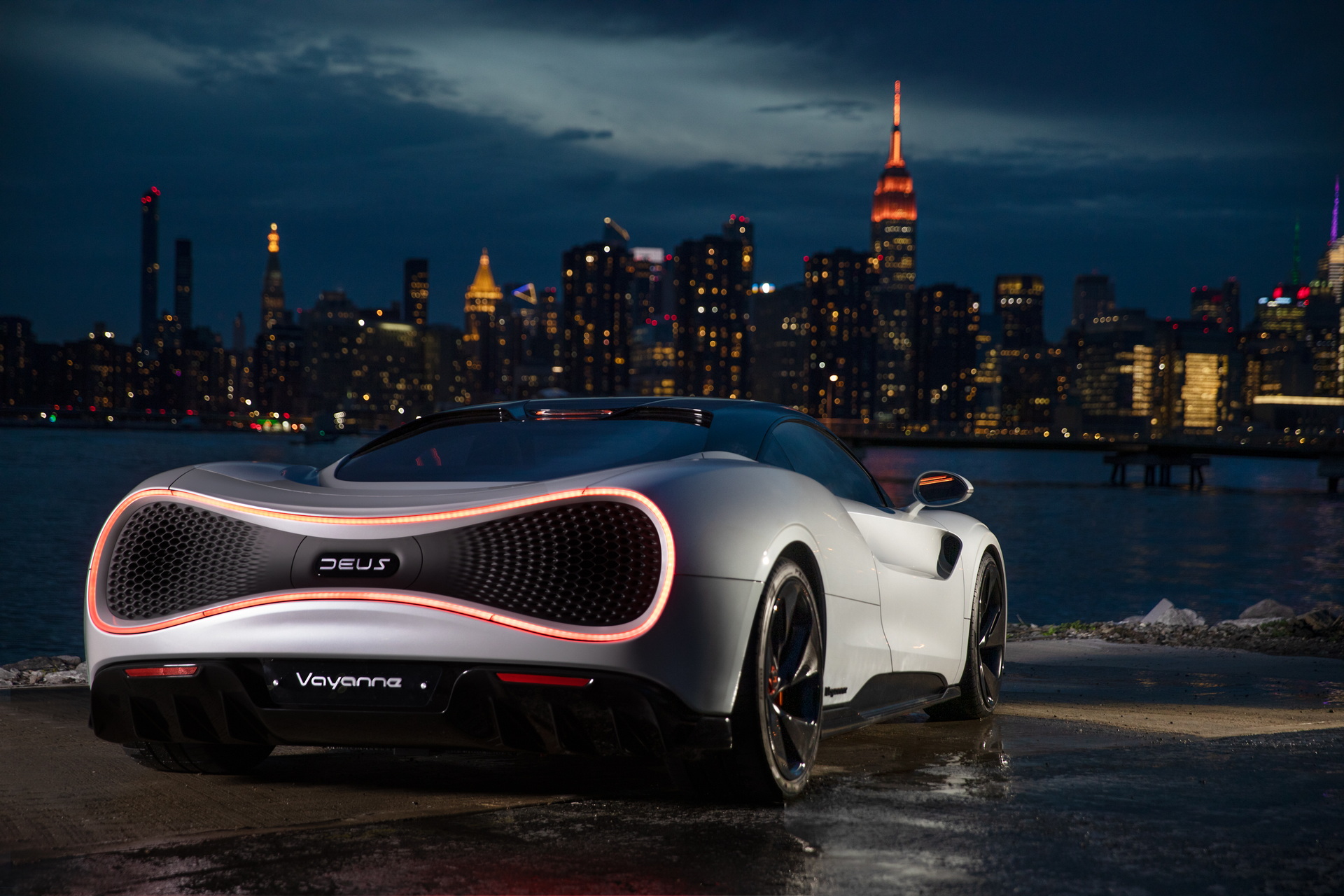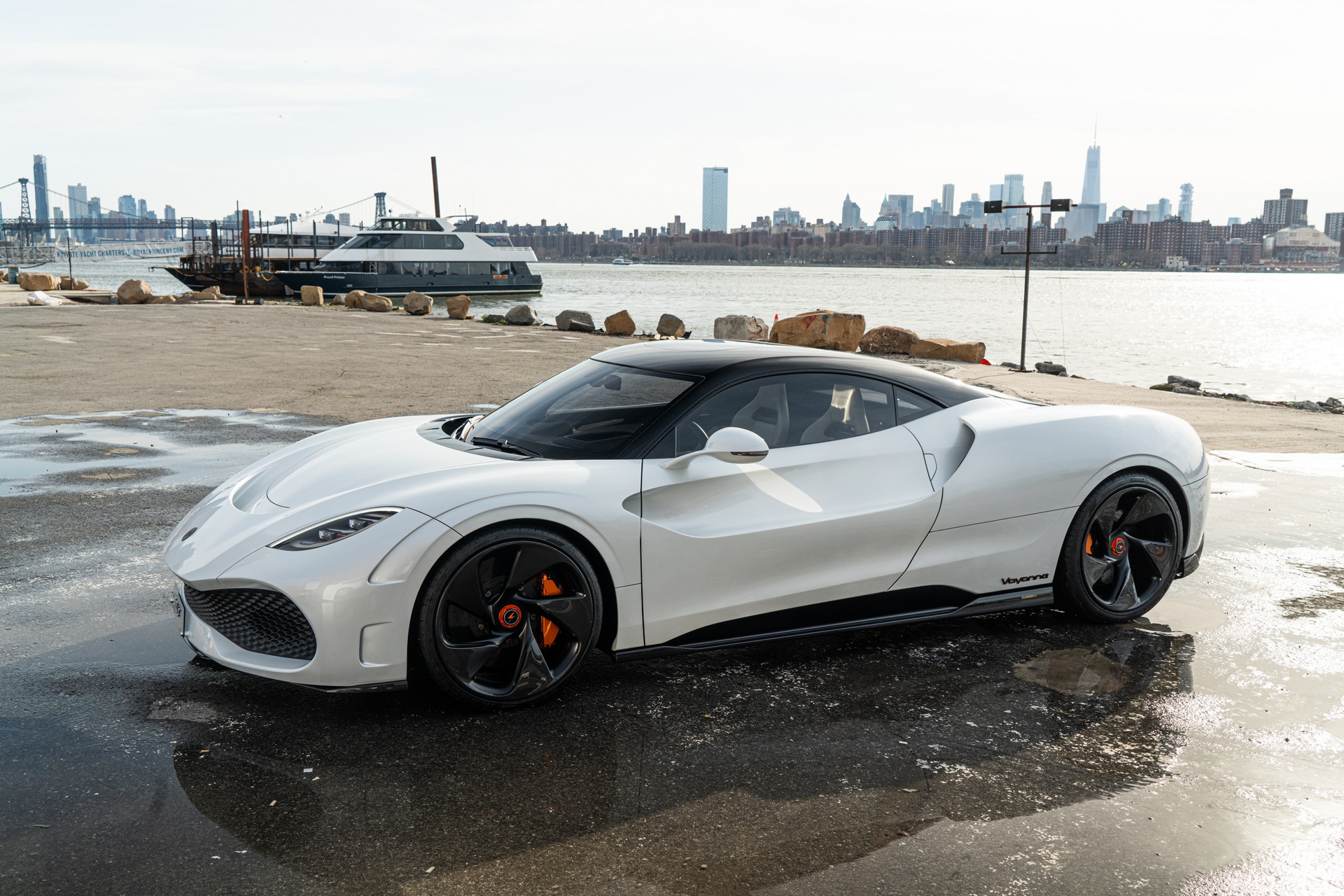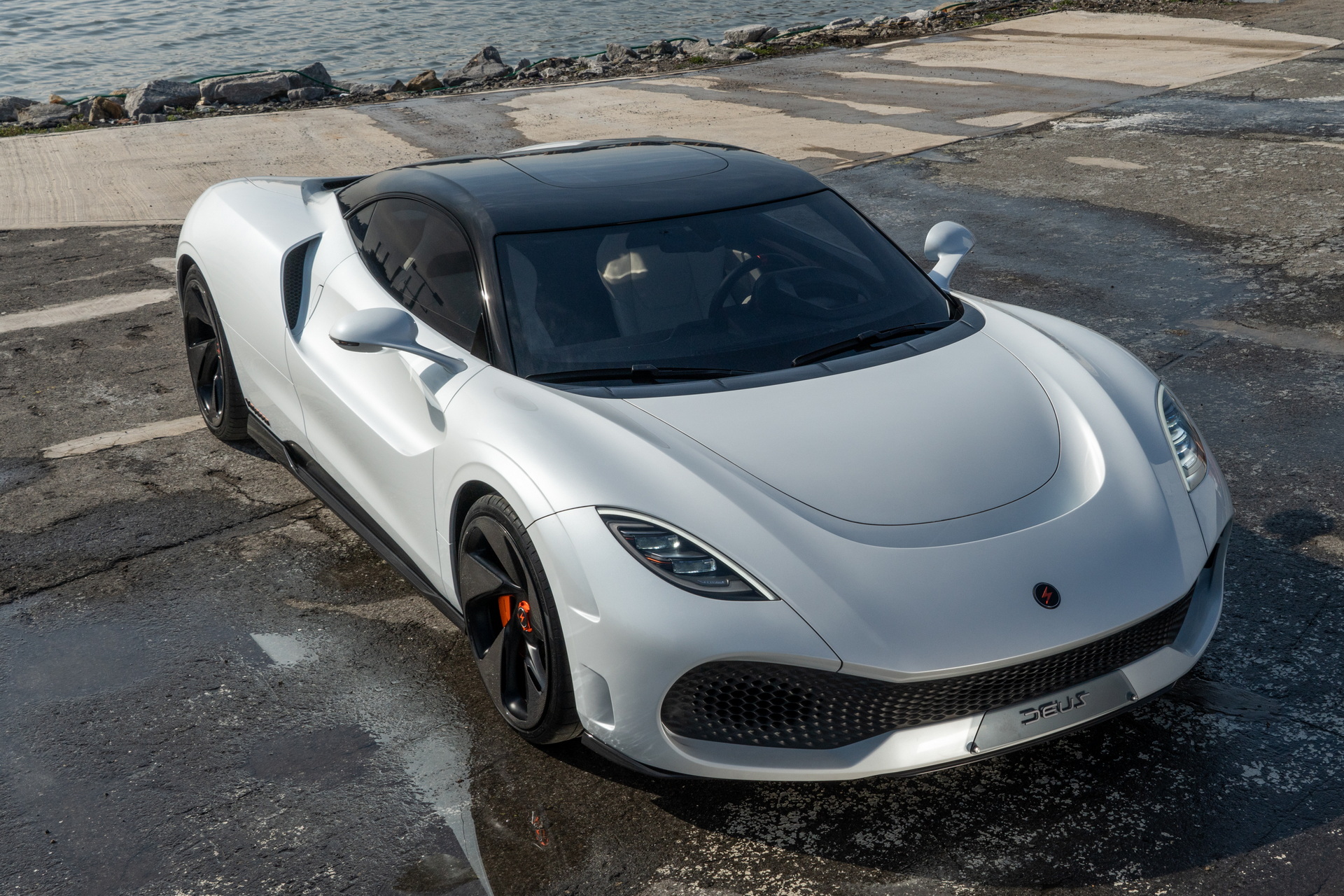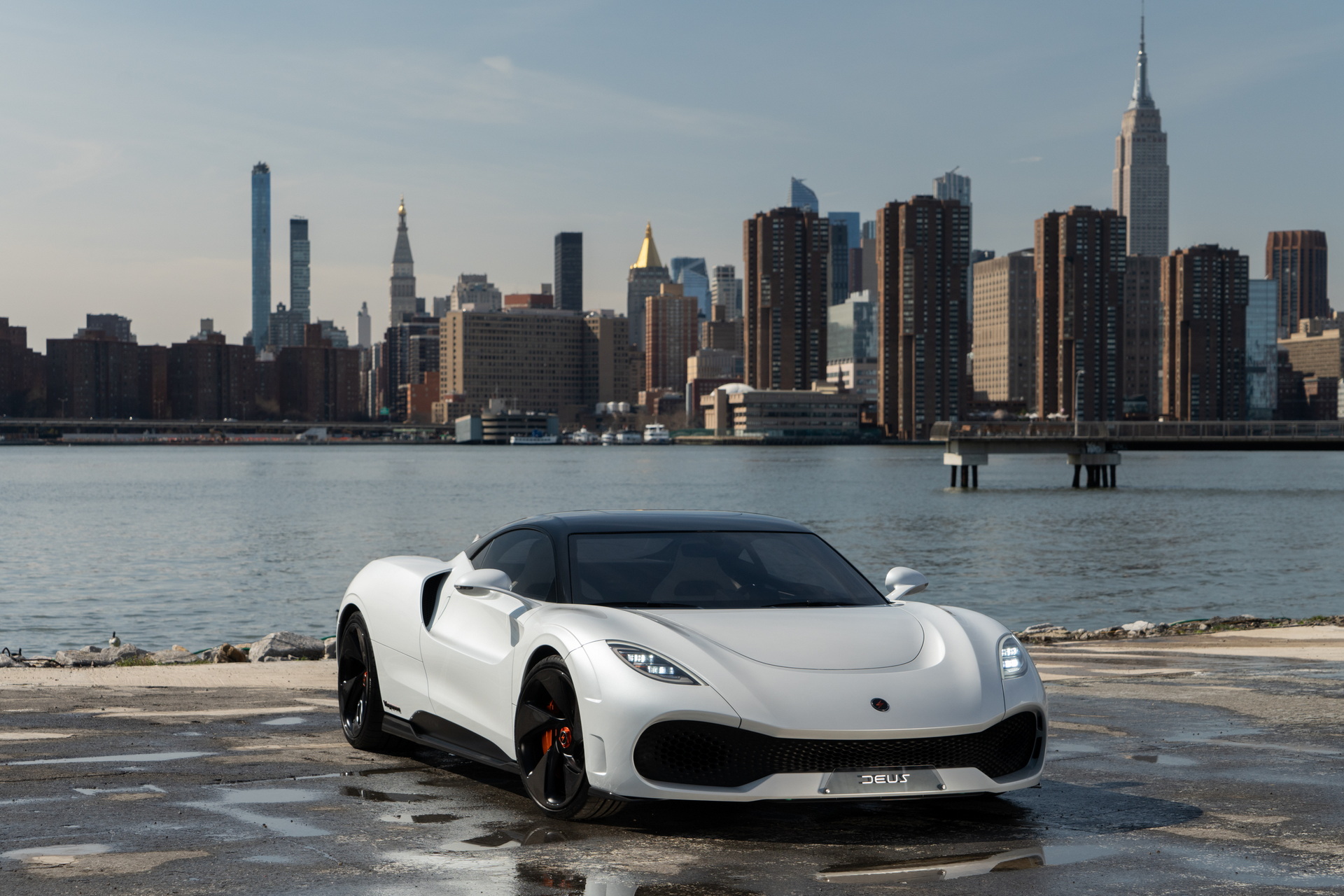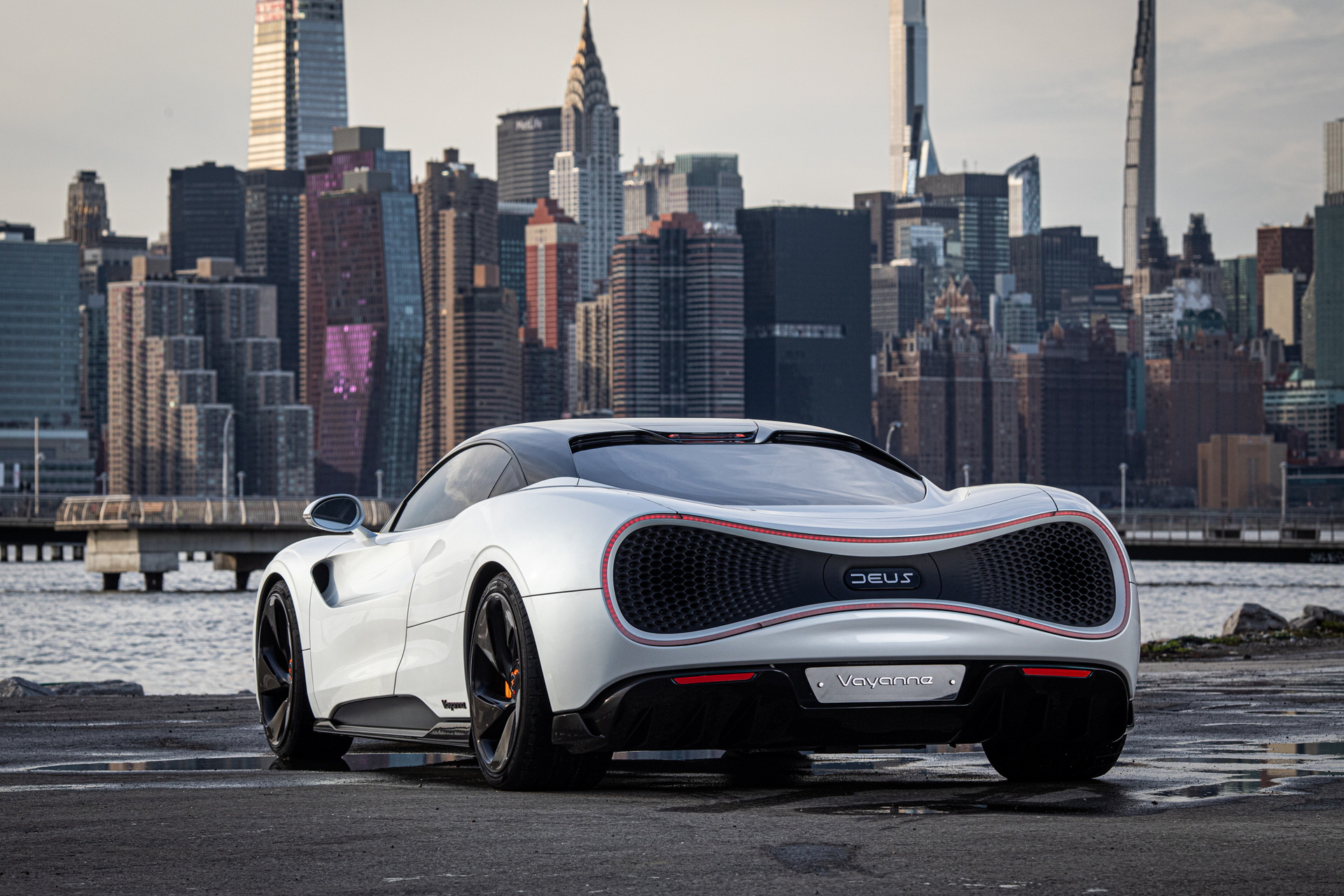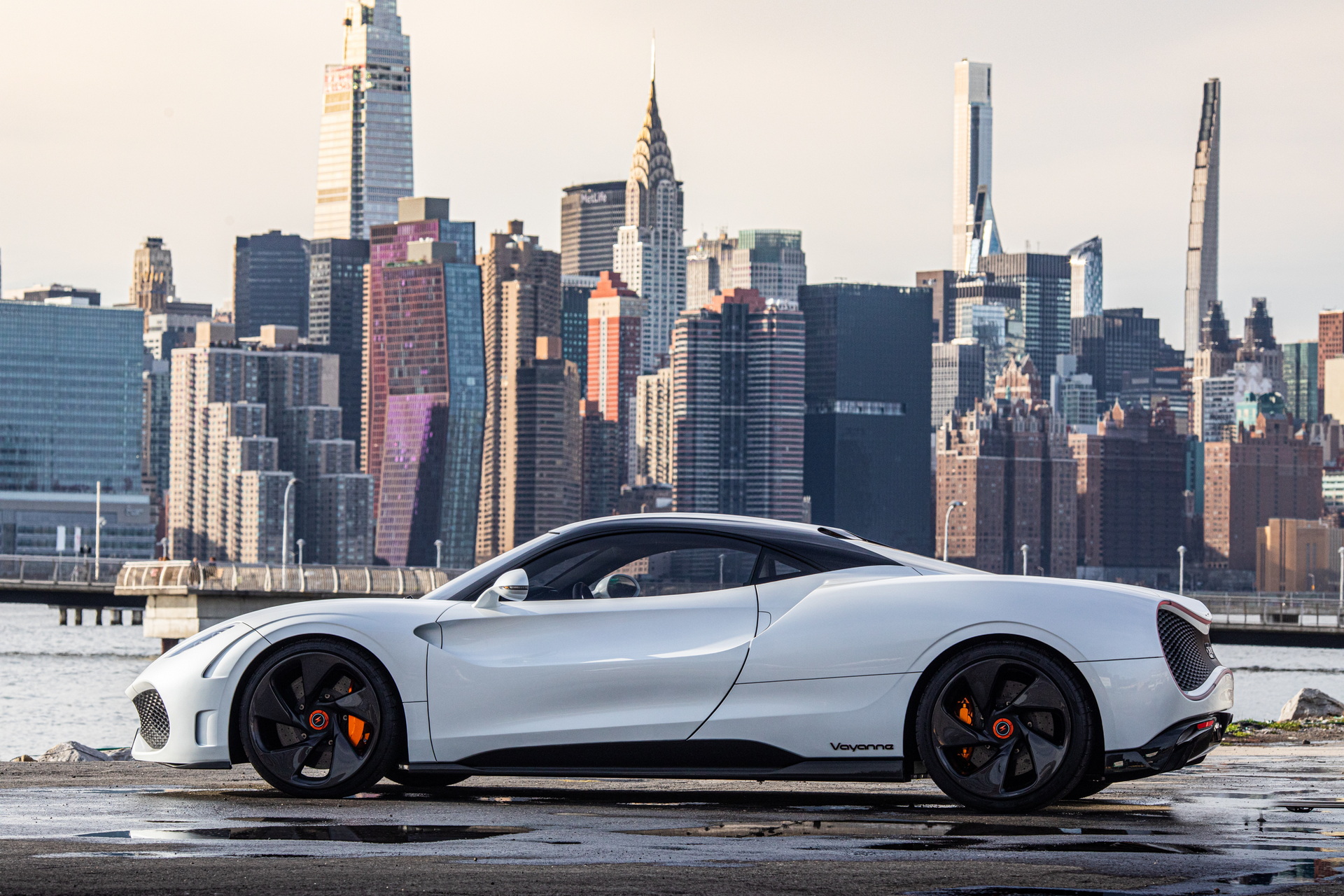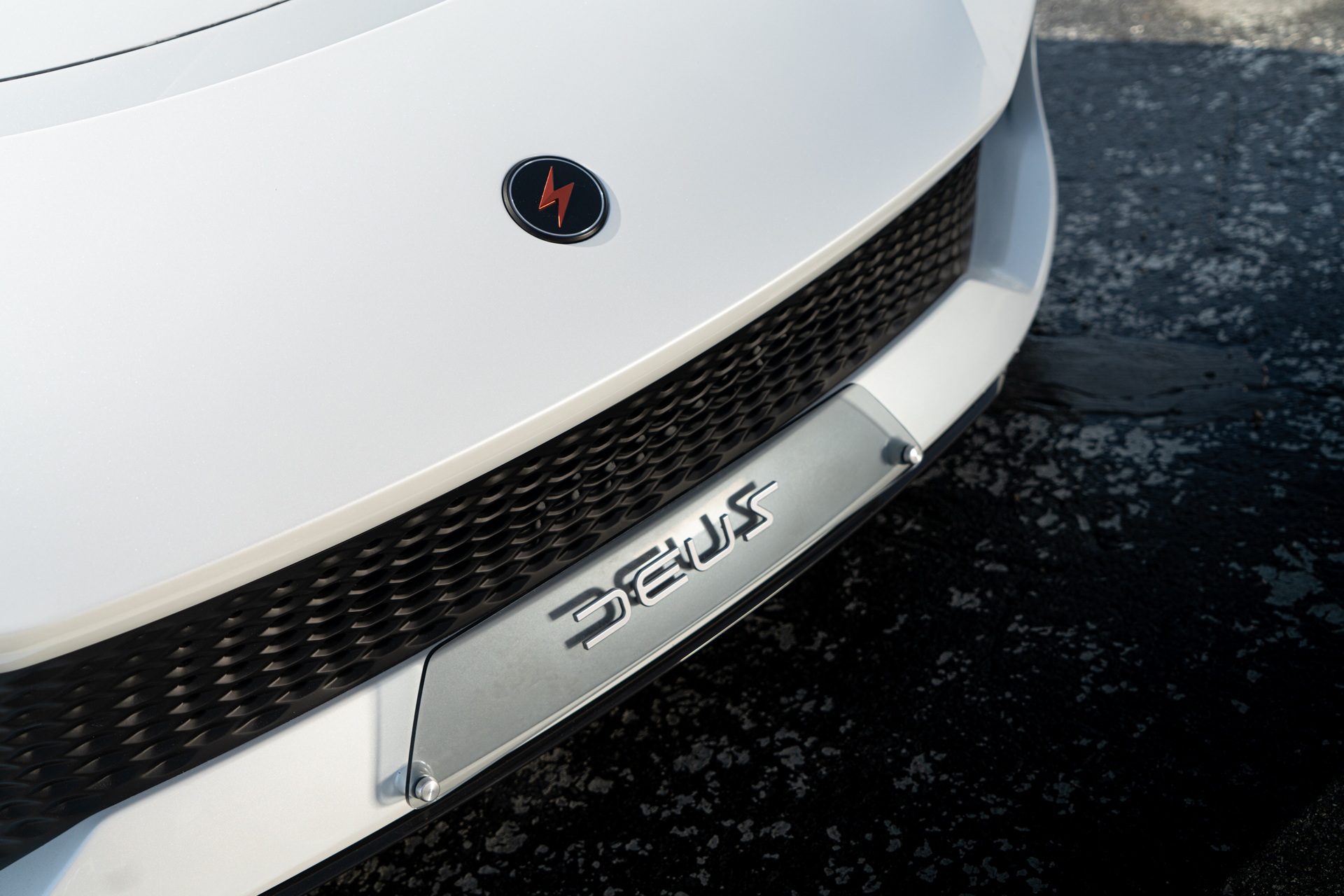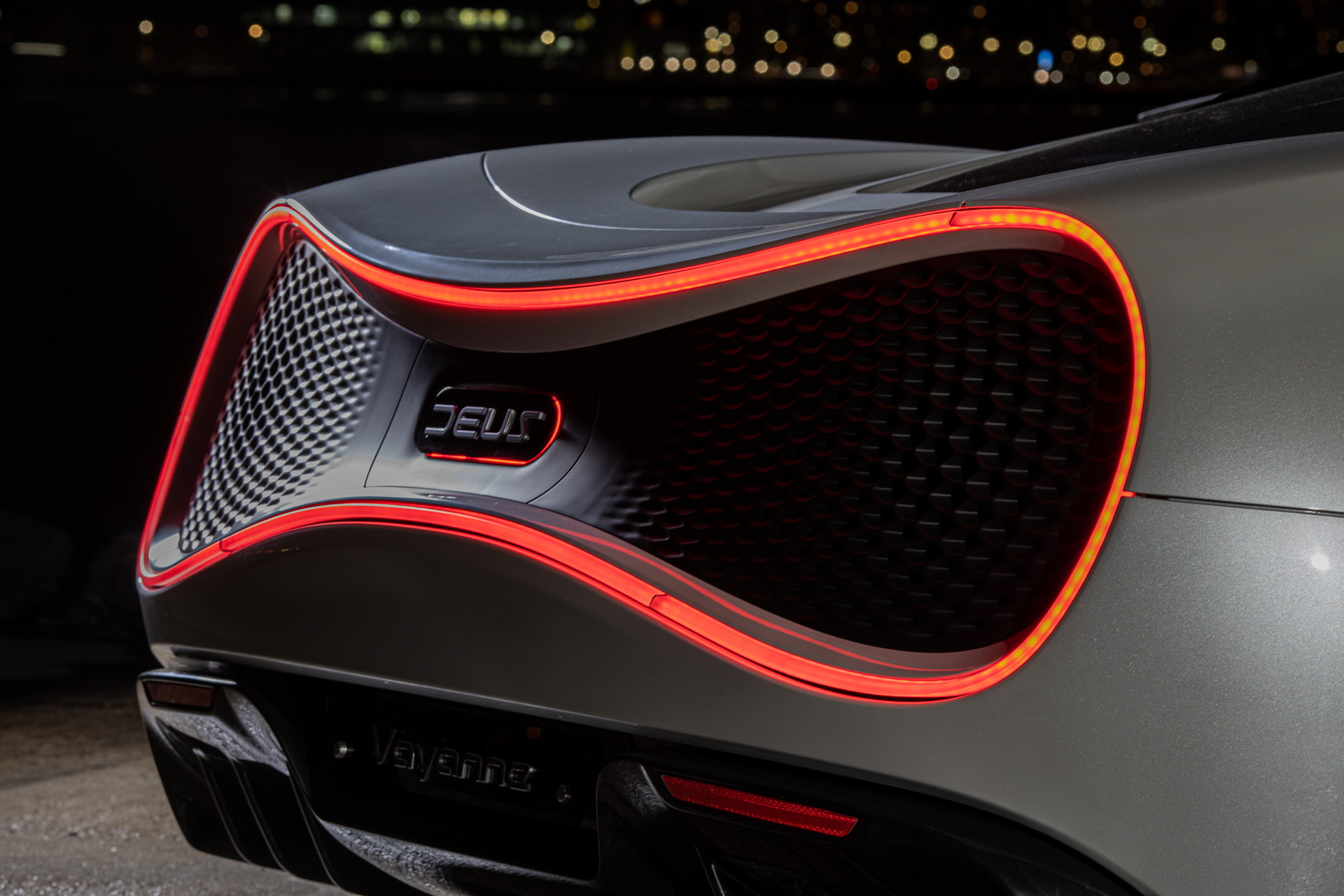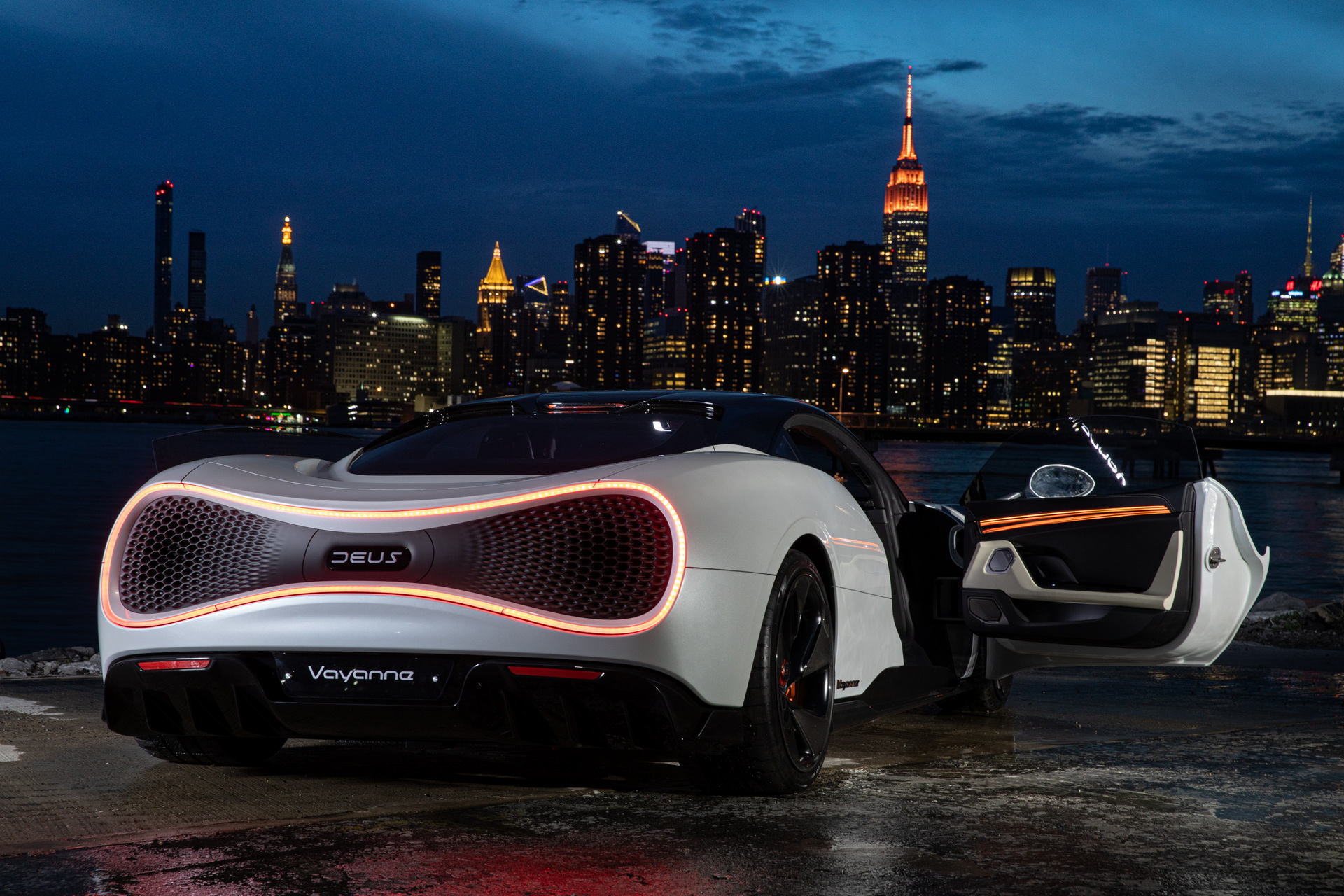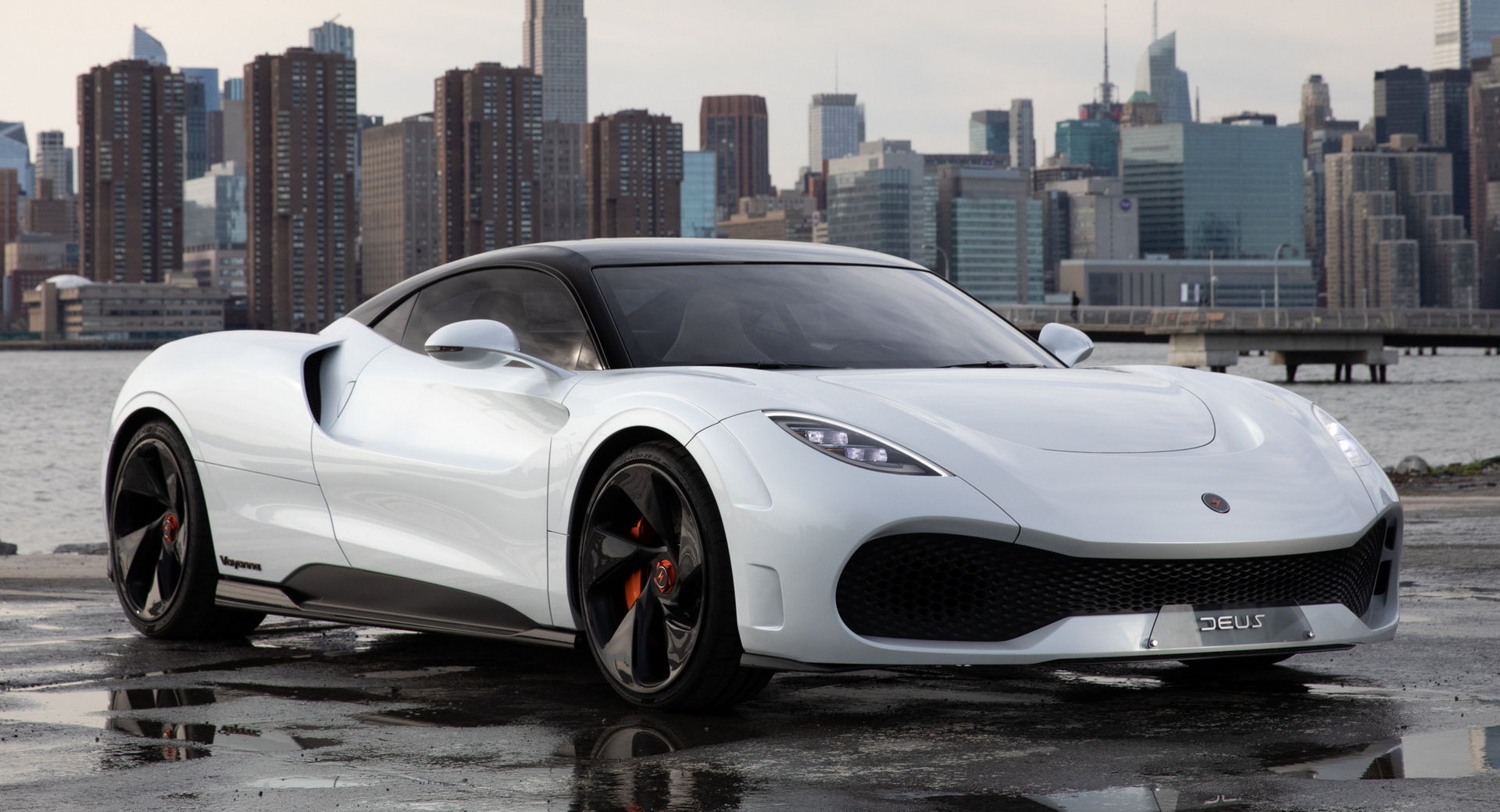The prize for the fastest, most powerful, and most expensive car on display at this years’s NYIAS probably has to go to the 2,201-hp (2,231 PS) Deus Vayanne electric hypercar. So why do I want to give it a second gong for being the most boring?
Here’s why: Deus seems to have forgotten that there’s more to a supercar than super performance. Everyone likes a sleeper when the car is a sedan or wagon, but a two-seat exotic millionaire’s plaything whose key selling points are a funky set of rear lights and power figure that sounds crazy now, but will undoubtedly look ordinary by the time you can actually buy one, is missing a trick in our view.
I’m reminded of the time in around 2009 when I was invited with colleagues from Car Magazine to see the still-secret MP4-12C at the McLaren Technology Center months ahead of its public reveal. When design boss Frank Stephenson, who’d been drafted into the project late in the day and was only able to make small changes to the already completed design, pulled back the covers we were shocked at how bland it looked.
As the first McLaren road car since the legendary F1, the 12C was a massive deal for the newly minted McLaren Automotive. Yet it already looked dated, and it was still a couple of years from the showrooms, as is the Vayanne, which isn’t slated to be ready until 2025. McLaren soon remedied its mistake, and the 720S that eventually replaced the 12C (or the 650S it was facelifted to become) was bold, inventive and distinctive, three characteristics entirely absent in the Vayanne.
Related: Deus Vayanne Is An Electric Hypercar With Over 2,200 HP That’s Limited To 99 Units
Despite drawing on the styling talents of legendary design house Ital Design, Austrian supercar newcomer Deus has ended up with a car that that looks almost entirely forgettable. Ever wanted to know what happened to the Ferrari 458 when it retired from the game, stopped working out and turned into a grumpy old man? Take a look at the bloated front end of the Vayanne for your answer.
The mid section is also thick and flabby. EVs are heavy by design under the skin, but the best EV exterior designs work hard to disguise that. The Vayanne’s does not. The only vaguely interesting thing about it is that infinity loop rear light motif, though it’s far less interesting than the back of the conceptually similar Lotus Evija. And doesn’t it look rather similar to Zuckerburg and Co’s new Meta logo? Don’t buy one of these and get annoyed if people ask you if this is the new Facebook car.
I’m picking on Deus, but in fairness, step away from the established names, and the world is full of incredibly derivative supercars whose styling in no way matches the excitement no doubt generated when you’re behind the wheel. The Rimac Nevera? It might be the fastest accelerating production car in the world, but my heart beat remains slow and steady when I’m looking at it.
The world of startup supercars is like the Korean car industry was 15 or 20 years ago. Hyundai and Kia struggled to create brand identities and too often relied on copying the designs of established players until they’d worked out their own design language.
The Vayanne might be fantastic to drive, and with a brand new electric platform from Williams Advanced Engineering and that headline-grabbing 2,201 hp (2,231 PS) output taking it to 62 mph (100 km/h) in 1.99 seconds, and on to a top speed of 248 mph (400 km/h), it’s almost certainly not going to be boring from the driver’s seat.
But where’s the theater, the wow factor, the rock star sizzle? You might not love the way the hydrogen-powered Hyperion XP-1 (pictured below) looks, but at least it’s got those bases covered, and proves it is possible to create a supercar that doesn’t look like a bad copy of every other supercar.
Related: New Hyperion XP-1 Is An American Hydrogen Hypercar Promising Over 1,000 Mile Range And +221 MPH
You might argue that you wouldn’t care what a car looked like if it was as fast as the Vayanne claims to be. But I’d argue that getting the design right is more important now than it ever was. It’s very difficult to use the full performance potential of a car with half this power output, and it’s likely only going to get harder with future restrictions on our speed and monitoring of it.
On top of that, it’s going to get harder for manufactures to make the giant performance leaps we’ve seen in the past when cars like the McLaren F1, Bugatti Veyron and Rimac Nevera opened new chapters on performance in the book of supercar. Like the Olympians chasing 100 m glory, future 0-60 mph (0-96 km/h) records are likely going to be shaved, not slashed, and few automakers will bother trying to top 300 mph (483 km/h) as Bugatti did with the Super Sport 300+.
Which is why it’s so important to get the design right, inside and out. Bugatti is famous for the speed of its cars, but less talked about, though just as important, is the focus on the quality of materials. If you’re ever lucky enough to sit inside a Chiron you’ll notice that there’s almost no visible plastic. Every surface is covered in leather or composite, every button is made from metal. The steering wheel is carved from a solid chunk of aluminum billet, for heaven’s sake.
And when you’re cruising through city traffic on your way to the casino at Monaco, unable to use any more than about 30 of your W16’s available 1479 hp (1500 PS), it’s the quality of the Chiron that will remind you why it was a good idea to spend mansion-money on a toy.
Contrast that with the interior of the Vayanne, which, funky lighting apart, certainly lives down to the promise of those exterior lines. Low volume manufacturers have traditionally relied on parts from big OEMs because it’s more cost effective than tooling-up to make bespoke components, but surely buyers at this price level don’t expect to jump into what is likely to be a $3+ million car and be faced with the switchgear and instrument cluster from a $50k BMW. And why does the whole cabin look like the interior of a sedan?
Related: Williams And Italdesign Partner On High-Performance EV Architecture
Deus says it’s only making 99 examples of the Vayanne, and you can bet there will be enough uber-rich guys to buy the production run. But it seems to us that this is a car built by some great minds and featuring some fascinating technology in the shape of that Williams platform that’s let down by a lack of imagination.
But maybe we’re wrong. What do you think about the Deus and its new-era hypercar contemporaries? Leave a comment and let us know.




